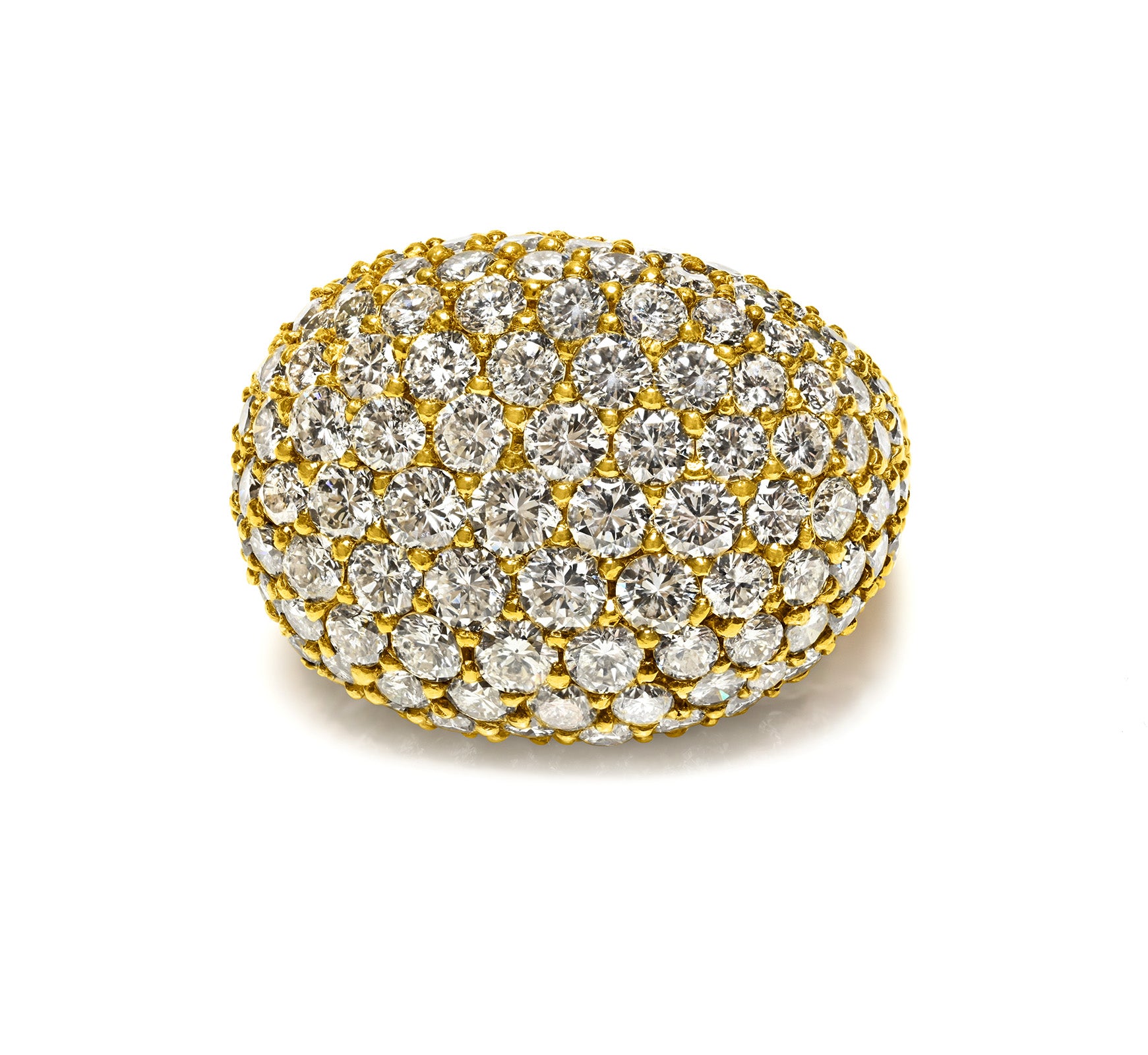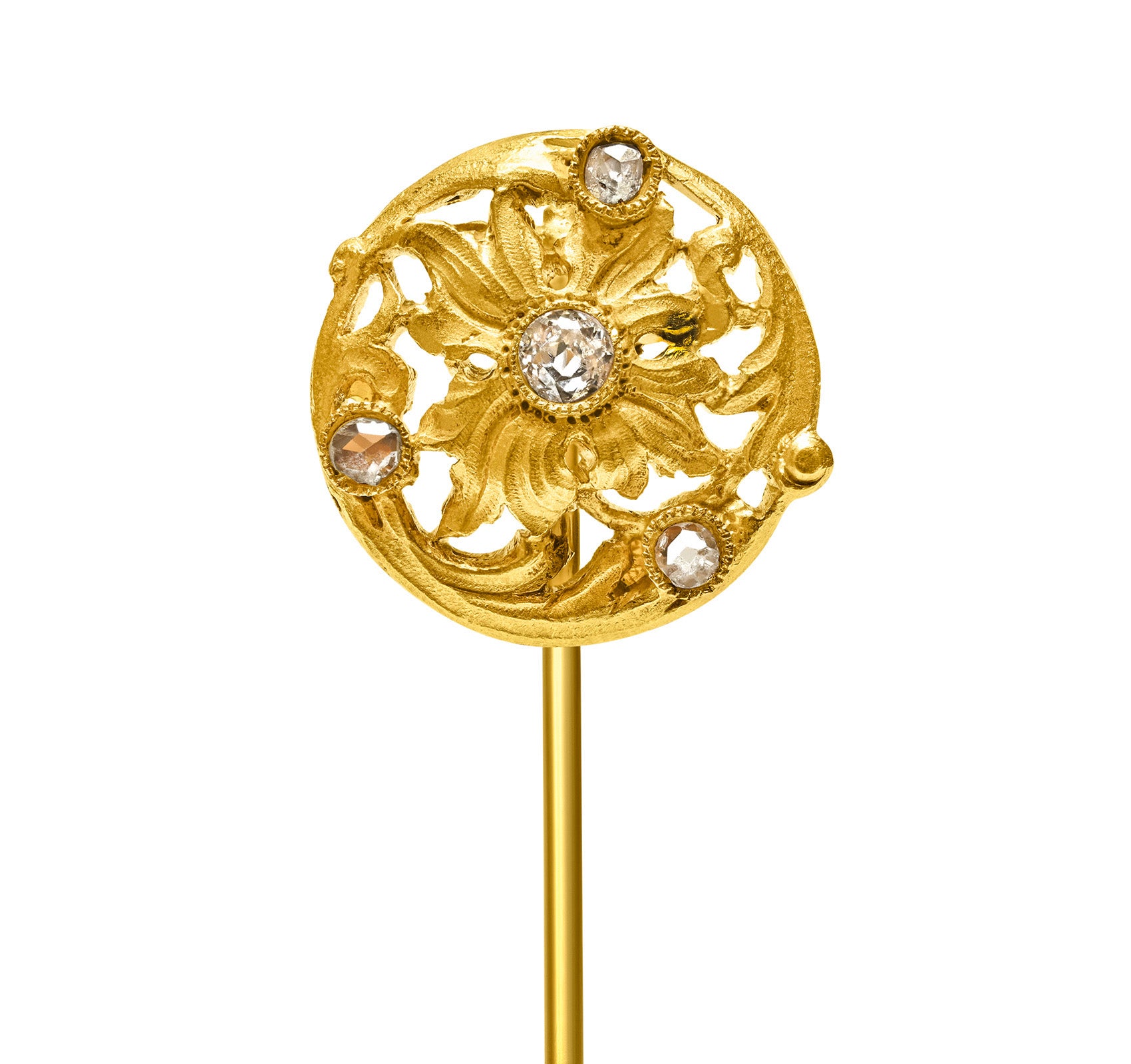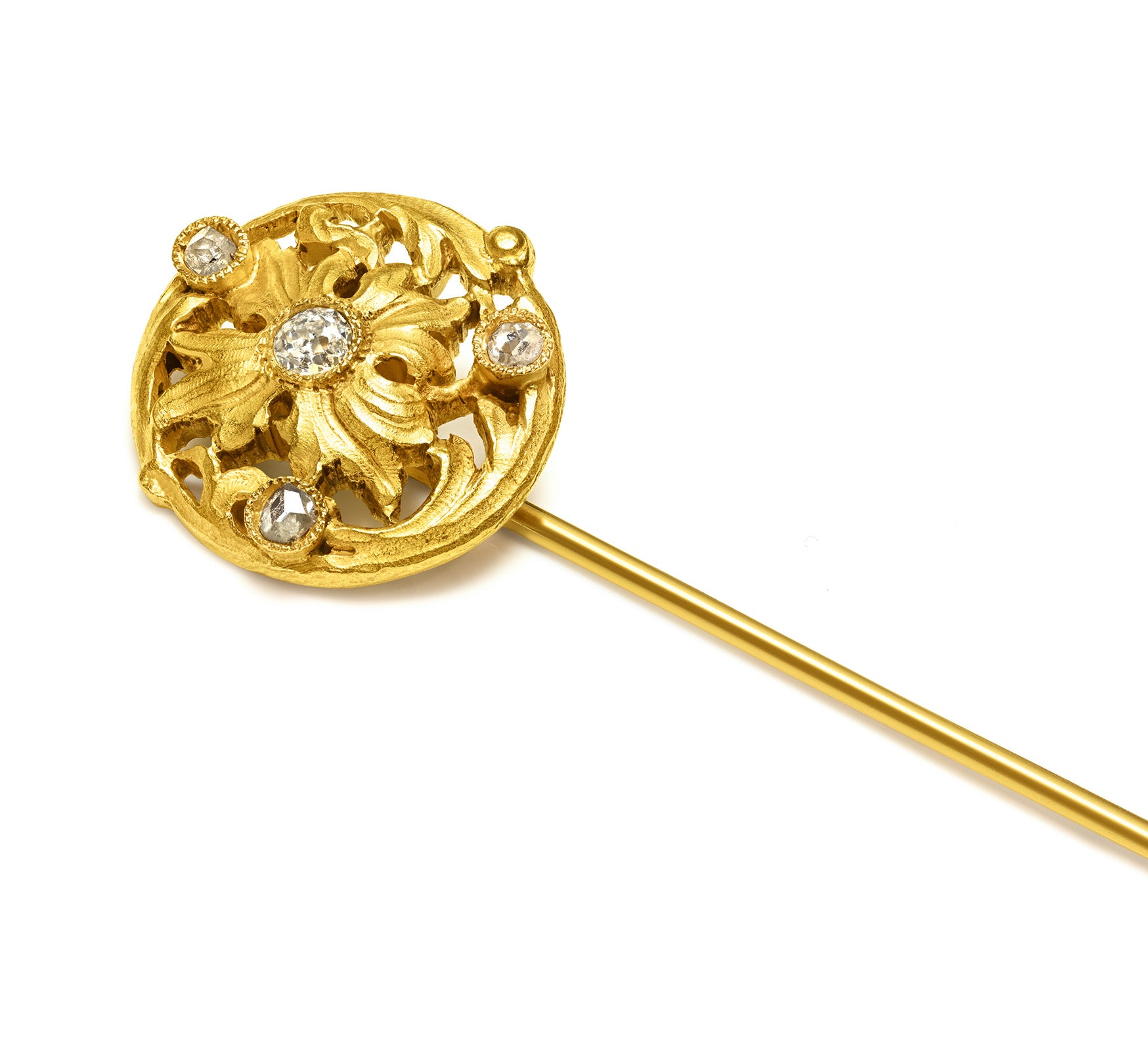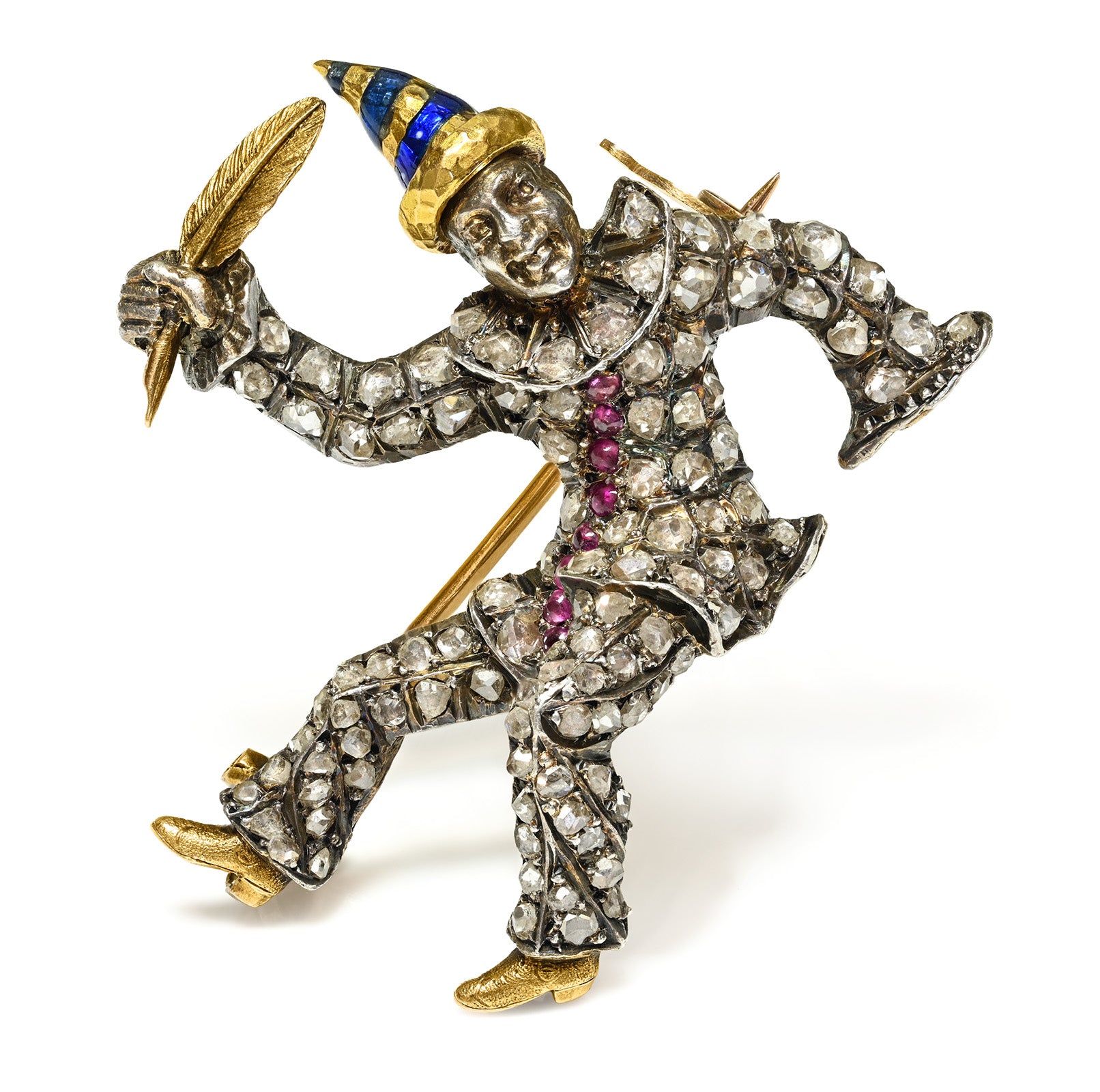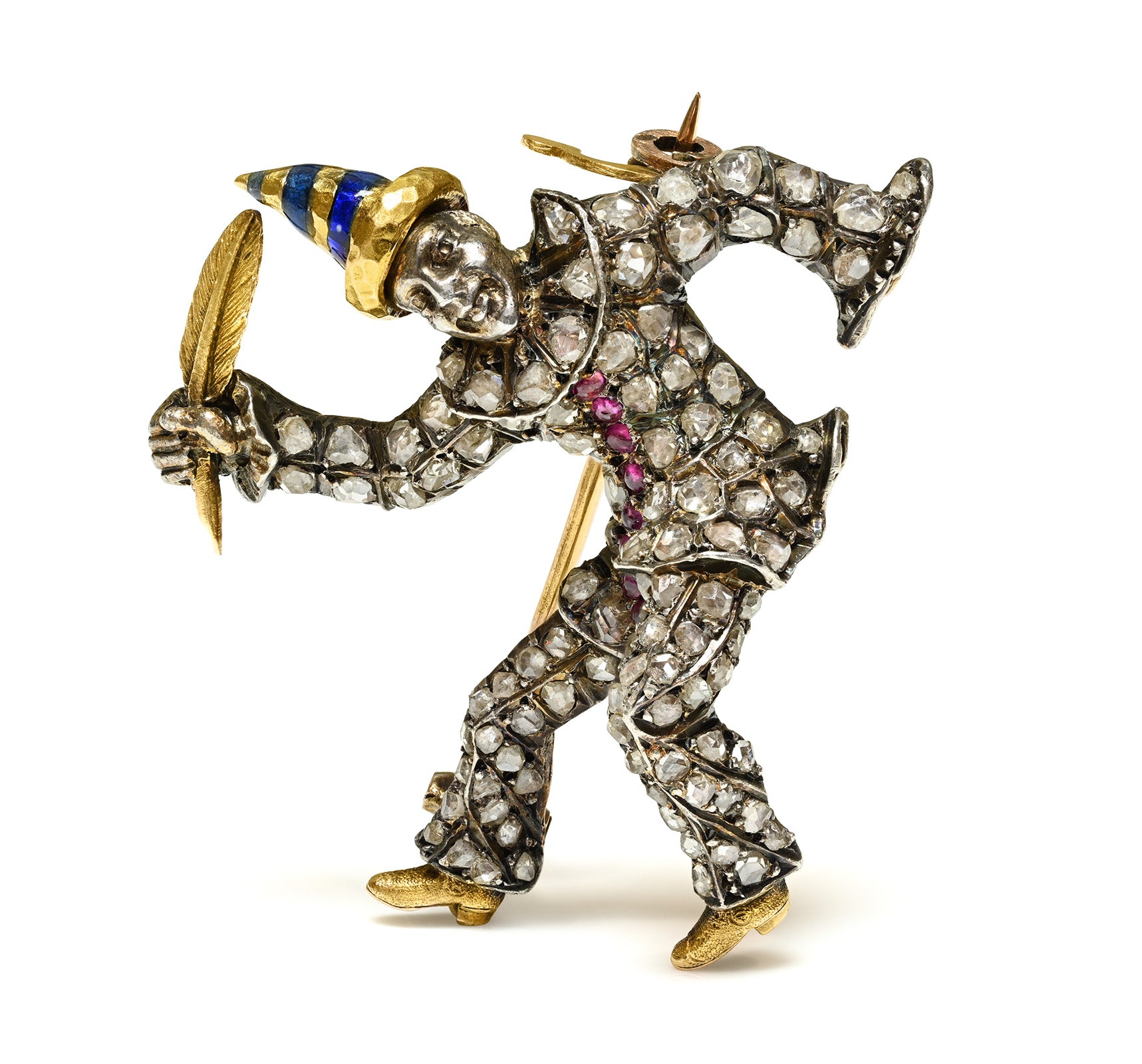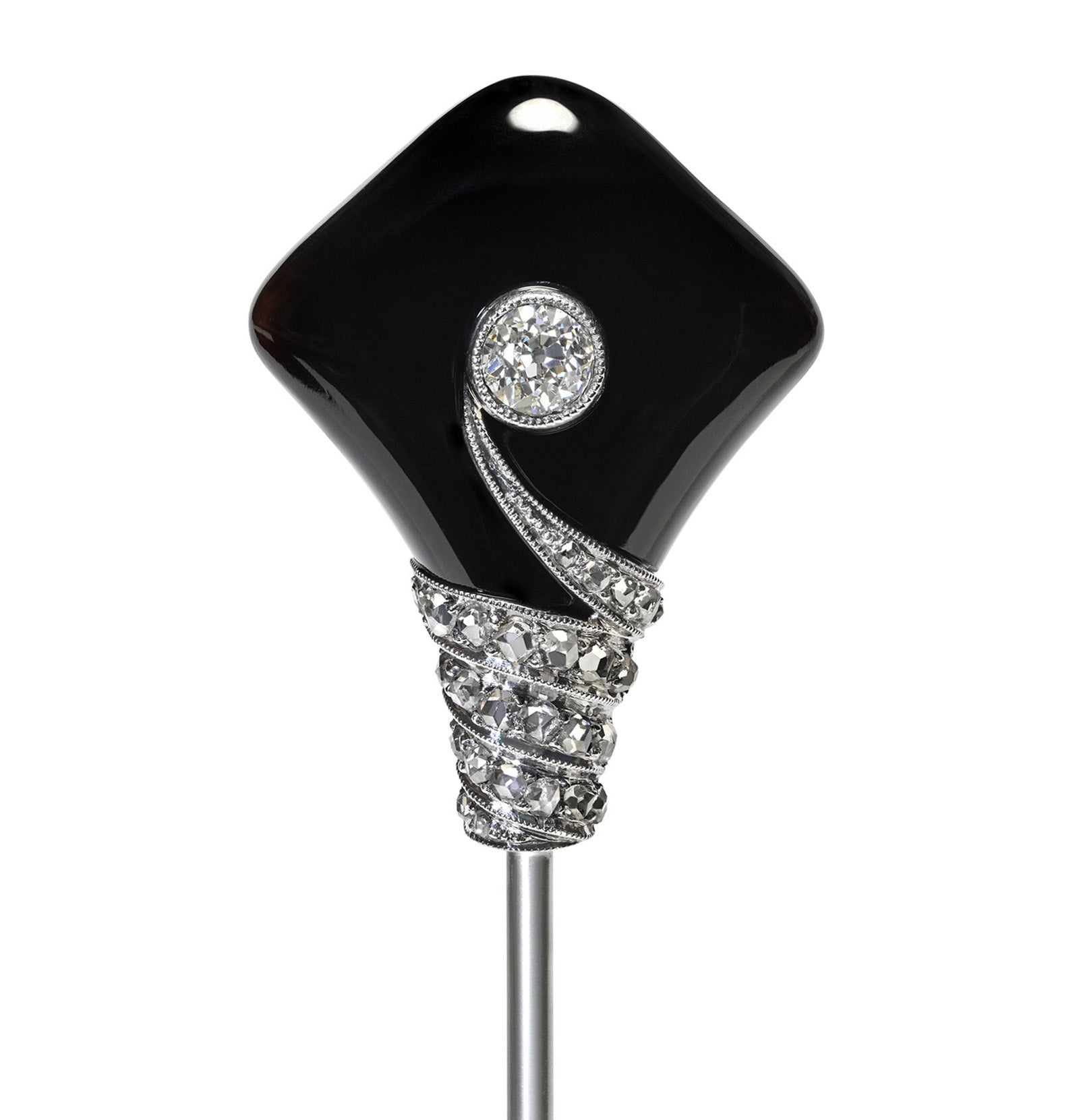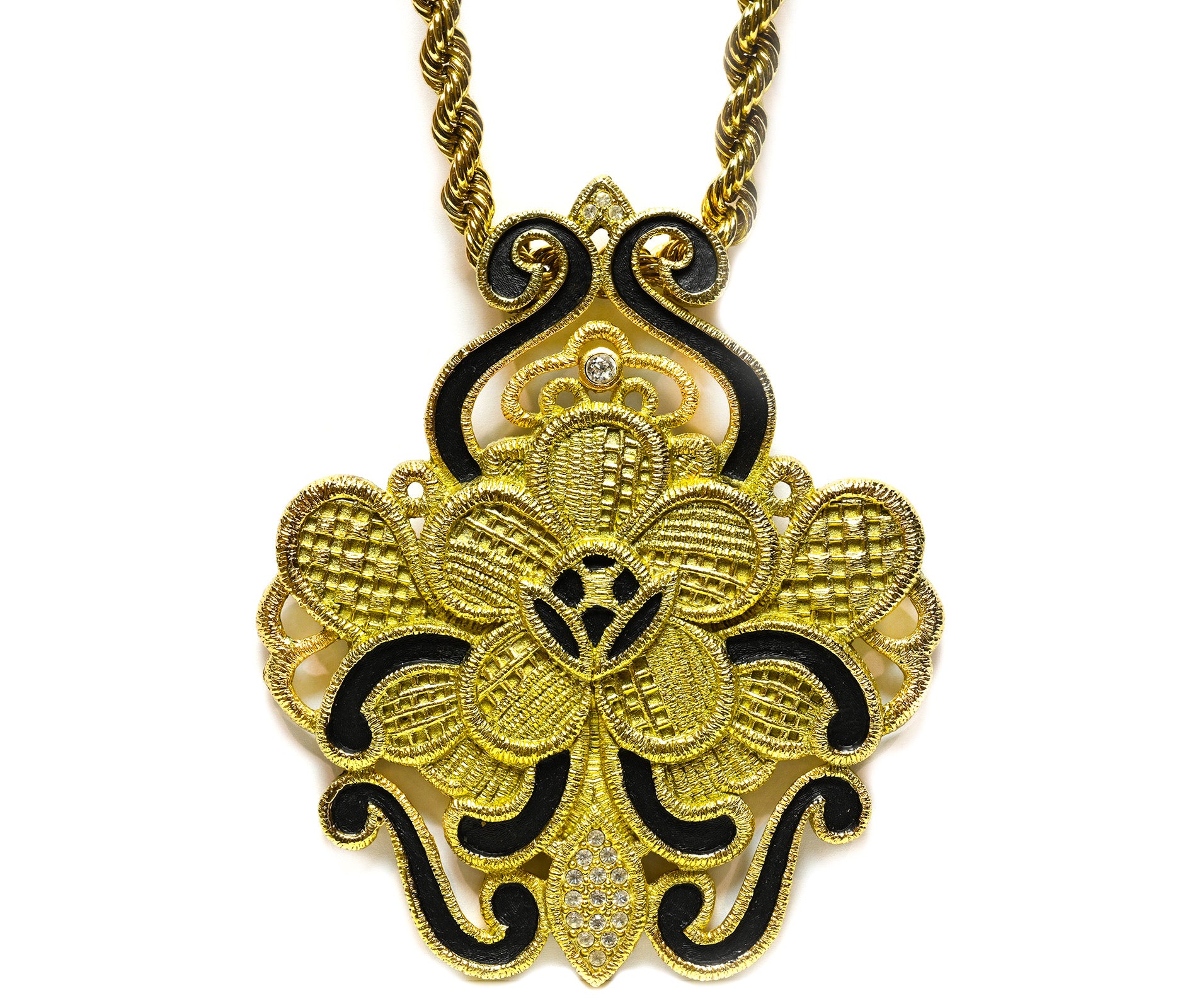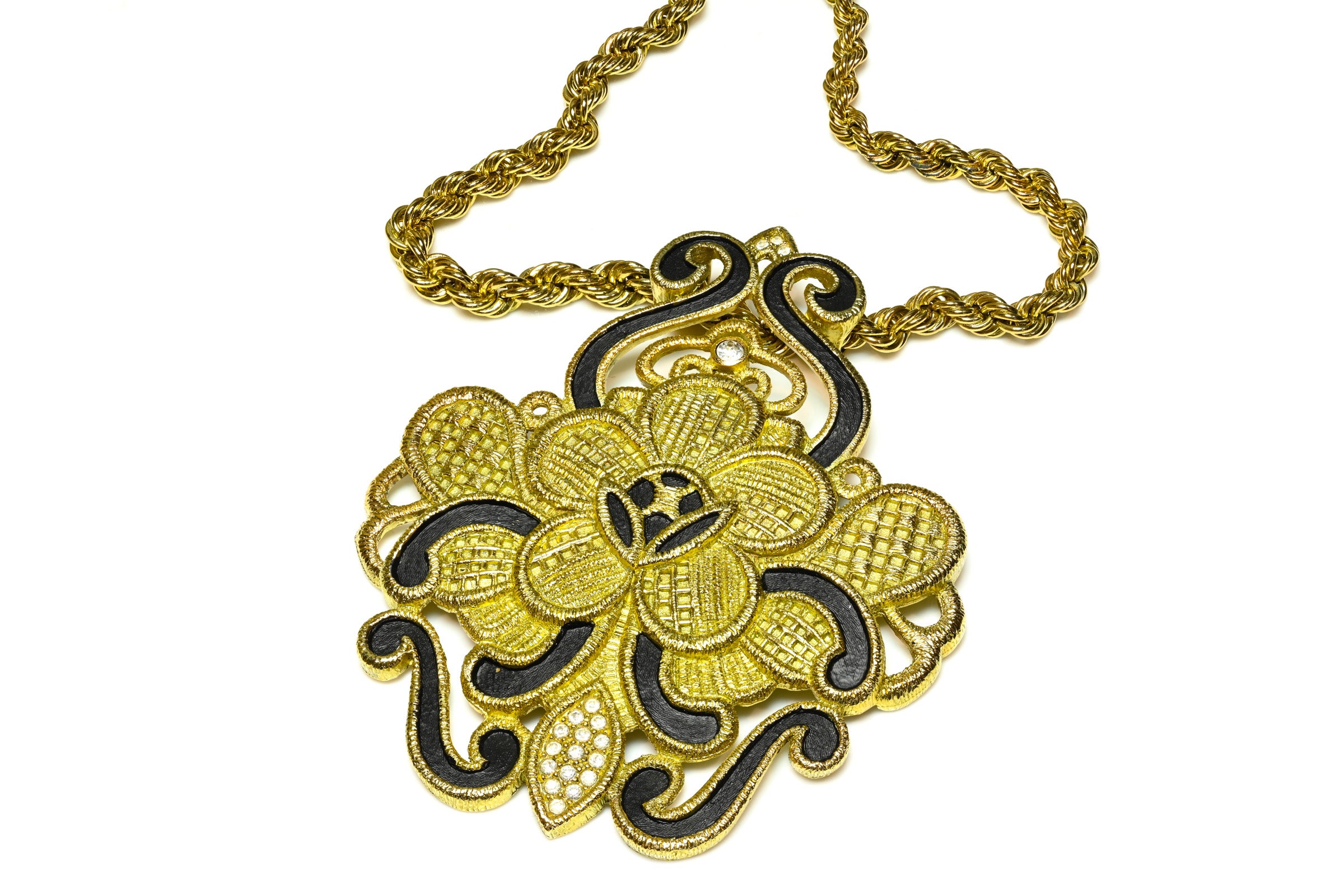The Hope Diamond – A Story About Beauty, Superstitions and Mysteries
The Hope Diamond is one of the most well-known gemstones in the world, if not THE most well-known.
In addition to its almost unsurpassed beauty, this captivating diamond has a sinister past and is accompanied by numerous tales of a supposed curse it carries.
The 45.52-carat (9.104 g) Hope Diamond has a blue color because it contains trace amounts of boron,
Also, due to its unusual size, more information about how diamonds are formed is still being discovered.
The History of The Hope Diamond
The 112 3/16-carat diamond that became known as the Hope Diamond was first acquired by the French merchant traveler Jean Baptiste Tavernier.
This diamond was rather trapezoidal in shape and had a rough cut, and it comes most likely from the Kollur mine in Golconda, India.
Along with 14 other sizable diamonds and numerous smaller ones, Tavernier sold the gem to King Louis XIV of France in 1668.
Sieur Pitau, the court jeweler, recut the stone in 1673, giving in a 67 1/8-carat stone.
The stone became known as the "Blue Diamond of the Crown" or the "French Blue" because the royal inventories characterized its color as a vivid steely blue.
In addition to its almost unsurpassed beauty, this captivating diamond has a sinister past and is accompanied by numerous tales of a supposed curse it carries.
The 45.52-carat (9.104 g) Hope Diamond has a blue color because it contains trace amounts of boron,
Also, due to its unusual size, more information about how diamonds are formed is still being discovered.
The History of The Hope Diamond
The 112 3/16-carat diamond that became known as the Hope Diamond was first acquired by the French merchant traveler Jean Baptiste Tavernier.
This diamond was rather trapezoidal in shape and had a rough cut, and it comes most likely from the Kollur mine in Golconda, India.
Along with 14 other sizable diamonds and numerous smaller ones, Tavernier sold the gem to King Louis XIV of France in 1668.
Sieur Pitau, the court jeweler, recut the stone in 1673, giving in a 67 1/8-carat stone.
The stone became known as the "Blue Diamond of the Crown" or the "French Blue" because the royal inventories characterized its color as a vivid steely blue.
The stone was reset by court jeweler Andre Jacquemin in a piece of ceremonial jewelry for the Order of the Golden Fleece (Toison D'Or) in 1749 at the request of King Louis XV.
The French Royal Treasury's jewels were given to the government in 1791 after Louis XVI and Marie Antoinette attempted to flee the country.
The French Royal Treasury's jewels were given to the government in 1791 after Louis XVI and Marie Antoinette attempted to flee the country.
The French Blue Diamond was taken during a week-long robbery of the crown jewels that took place in September 1792.
Napoleon vowed to retrieve all of the French royal jewels, including the blue diamond, when he later assumed the role of emperor of France. Napoleon was unable to locate the French Blue, though.
The French Blue Diamond was lost for around 20 years before a smaller, 45-carat blue diamond, which had belonged to an English diamond trader named Daniel Eliason, was discovered in London in 1812.
Although Eliason did not specify its origin, it was assumed that it had been taken from the French Blue. The 45-carat blue diamond seen in the historical document is the same one that is currently housed in the Smithsonian.
The earliest mention of the Hope Diamond's subsequent owner appears in the 1839 entry of the famous gem collector Henry Philip Hope, from whom the stone derives its name.
Although Eliason did not specify its origin, it was assumed that it had been taken from the French Blue. The 45-carat blue diamond seen in the historical document is the same one that is currently housed in the Smithsonian.
The earliest mention of the Hope Diamond's subsequent owner appears in the 1839 entry of the famous gem collector Henry Philip Hope, from whom the stone derives its name.
After the death of Henry Philip Hope in 1839, and after a protracted legal battle, the famous diamond passed to his nephew Henry Thomas Hope, and eventually to the nephew's grandson Lord Francis Hope.
In order to assist him in paying off his obligations, Lord Francis Hope requested permission from the Court of Chancery and his sisters, in 1901, to sell the Hope Diamond.
The Hope Diamond was bought by a London dealer who promptly sold it to Joseph Frankels and Sons in New York City. Joseph Frankels and Sons kept the stone in New York until they themselves needed money.
Next, the Hope Diamond was sold to Selim Habib, who in 1909 auctioned it off in Paris. Although it didn't sell at the auction, it was immediately bought by C.H. Rosenau, who later sold it again to Pierre Cartier the same year.
After that, Mrs. Evalyn Walsh McLean acquired this magnificent stone, and she had it in her possession up until her death in 1947.
According to the Smithsonian Institution, Mrs. McLean's estate sold all of her jewels, including the Hope Diamond, to Harry Winston Inc. of New York City in 1949.
The Hope Diamond was given to the National Museum of Natural History in Washington, D.C. on November 10, 1958, by Harry Winston Inc., and it quickly rose to the position as the museum's star attraction.
The Hope Diamond was unveiled on November 18, 2010, and it was put on temporary display at the Smithsonian in a specially made necklace called "Embracing Hope" that was made by the Harry Winston company.
The Hope Diamond was unveiled on November 18, 2010, and it was put on temporary display at the Smithsonian in a specially made necklace called "Embracing Hope" that was made by the Harry Winston company.
The final design was chosen by popular voting out of three concepts for the new setting, which featured only white diamonds and white metal.
Geological Beginnings
Geological Beginnings
About 1.1 billion years ago, the Hope Diamond was formed deep within the Earth.
The stone was created via the formation of strong bonds between carbon atoms, just like all diamonds are.
The current gem was created after it was taken from its initial kimberlite embedment.
The Hope Diamond's uncommon blue color is caused by minute amounts of boron atoms that are combined with the carbon lattice.
The Hope Diamond is [important] as a rare scientific specimen that can significantly advance our understanding of diamonds and how they are generated in the Earth, contrary to what most people believe.
Physical Properties
Weight: The Hope Diamond's weight was estimated by the laboratory of the Gemological Institute of America in December 1988 to be 45.52 carats (9.104 g; 0.3211 oz).
Size and shape: The diamond has been compared to a pear-shaped walnut or a pigeon egg in terms of size and shape. 1 inch, 7/8 inch, and 15/32 inch (1.60 mm, 21.78 mm, and 12.00 mm) are the dimensions.
Color: The Hope Diamond has been characterized as having a "steely-blue" or "fancy dark greyish-blue" color as well as being "dark blue in color."
Colorimetric analysis can demonstrate that blue diamonds like the Hope are grayer (lower in saturation) than blue sapphires.
When the diamond was evaluated by the Gemological Institute of America in 1996, they assigned it a fancy deep grayish-blue rating using its own scale.
The Hope Diamond's color has been referred to as "a sapphire blue" and has been described as a "superfine deep blue" in popular literature, according to Wikipedia.
These descriptions frequently compare the Hope Diamond's hue to that of a fine sapphire, such as "blue of the most beautiful blue sapphire".
It was described as a "beautiful violet" by Tavernier.
Phosphorescence: When the Hope Diamond is exposed to short-wave ultraviolet light, an extraordinarily potent, vivid red phosphorescence is seen.
This "glow-in-the-dark" property, which lasts for a while after the light source has been turned off, may have contributed to its reputation as being "cursed".
Clarity: It was determined that the clarity was VS1, with some yellowish graining.
Cut: "Cushion antique brilliant with a faceted girdle and additional facets on the pavilion" was how the cut was characterized.
Chemical composition: In order to analyze Hope Diamond's chemical makeup, the stone was taken out of its setting in 2010.
Preliminary tests, after drilling a hole one nanometer deep, revealed the existence of boron, hydrogen, and perhaps nitrogen; the concentration of boron ranges from zero to eight parts per million.
The blue hue of the stone is brought on by the presence of boron.
Hardness: Although diamonds, like the Hope Diamond, are among the toughest natural minerals known to man, improper handling can cause a diamond's crystal to fracture along certain weak planes in its crystalline structure.
Before the stone is faceted, these weak planes enable diamond cutters to break a rough, uncut stone into smaller, perfect pieces.
To manufacture a faceted diamond, the uncut rough is set on a holder and then the flat surfaces, or facets, are ground into the surface of the stone using specially crafted metal wheels loaded with diamond particles.
The final product is a gem that sparkles by diffracting/reflecting light in various ways. These facets are honed and polished using ever finer grades/grits of diamond powder.
Superstitions
The Hope Diamond has been surrounded by a mythology of a purported "curse" that states that anyone who owns or wears it will suffer misfortune and tragedy, but there are strong indications that such fabrications only add to the stone's allure and mystery, as more attention usually increases the gem's worth and newsworthiness.
Many fictitious claims were made in the late nineteenth and early twentieth centuries about the Hope Diamond's original form and the so-called curse.
Similar to the "curse of Tutankhamun," this specific type of "legends" surrounding the Hope Diamond was most likely independently created by Western authors in the Victorian era.
Although many media sources and pundits claimed that there isn't concrete evidence connecting the Hope Diamond to disaster, it fostered rumors that anyone who owned it was doomed to experience terrible luck.
Spreading Rumors
There is proof that a number of newspaper articles contributed to the "curse" rumor's propagation.
For instance, a New Zealand newspaper article from 1888 purportedly described the allegedly scandalous past of the Hope Diamond, claiming that it was "said once to have formed the single eye of a great idol" as part of a confusing description that also claimed that its namesake owner had personally "brought it from India" and that the diamond's true color was "white, [although] when held to the light, it emits the most superb and dazzling blue rays".
Another piece that appeared in The New York Times in 1911 listed a number of alleged instances of misfortune, however, there were few independent verifications of these claims:
• After purchasing the Hope Diamond from Simon Frankel, Jacques Colet killed himself
• Colet sold the stone to Prince Ivan Kanitovski, who was later assassinated by Russian revolutionaries
• Kanitovski loaned the Hope Diamond to Mlle Ladue, who was "murdered by her sweetheart"
• Simon Mencharides, along with his wife and little kid, were thrown from a cliff after having previously sold the stone to the Turkish ruler
• Abu Sabir received the diamond from Sultan Hamid to "polish". Nevertheless, Sabir was later detained and subjected to torture
• After bringing the Hope Diamond from India to Paris, Tavernier was torn to pieces by wild dogs in Constantinople
• Colet sold the stone to Prince Ivan Kanitovski, who was later assassinated by Russian revolutionaries
• Kanitovski loaned the Hope Diamond to Mlle Ladue, who was "murdered by her sweetheart"
• Simon Mencharides, along with his wife and little kid, were thrown from a cliff after having previously sold the stone to the Turkish ruler
• Abu Sabir received the diamond from Sultan Hamid to "polish". Nevertheless, Sabir was later detained and subjected to torture
• After bringing the Hope Diamond from India to Paris, Tavernier was torn to pieces by wild dogs in Constantinople
Since there are few, if any, independent confirmations to support these claims, the prevailing opinion is that they are speculative and flimsy.
A recurring subject in a variety of literary genres is the greedy thief who steals a prized possession from the tomb or shrine of an ancient deity or monarch, only to be punished by it.
The Moonstone by Wilkie Collins, published in 1868, may have served as inspiration for the fabrications since it developed a cogent story from hazy and mostly ignored stories associated with other jewels, like the Koh-i-Noor and the Orloff diamond.
Unhappy Fates of Historical Figures
The Hope Diamond was also held responsible for the unfortunate outcomes of other historical personalities who were only loosely connected to its ownership, such as Madame Athenais de Montespan and Nicolas Fouquet, the French finance minister, who both perished under the reign of Louis XIV of France.
Also, the Hope Diamond was held responsible for the forced abdication of Turkish Sultan Abdul Hamid, who allegedly murdered several members of his court for the stone, as well as the beheadings of Louis XVI and Marie Antoinette, and the rape and mutilation of the Princesse de Lamballe during the French Revolution.
Even jewelers who may have handled the Hope Diamond were not immune to the alleged evil of the stone: the insanity and death of Jacques Colot, who is said to have purchased the stone from Eliason, and the financial disaster of jeweler Simon Frankel, who acquired it from the Hope family, were both allegedly connected to the gem.
Numerous other hitherto unidentified individuals also perish in the legend:
A Russian prince by the name of Kanitowski, for instance, who lent it to the French actress Lorens Ladue and then shot her dead on stage before being stabbed to death by revolutionaries; Simon Montharides, who was thrown over a cliff with his family; and others.
Researchers have come to the conclusion that the majority of these characters are fictional because only a small number of them have had their historical existences confirmed.
The curse seems to have vanished since the Smithsonian obtained the Hope Diamond.
According to a Smithsonian curator, owning the diamond has been "nothing but good luck" for the nonprofit national museum, which has also seen an increase in visitors and been able to amass a "world-class gem collection" as a result.
The Hope Diamond, often referred to as Le Bijou du Roi ("the King's Jewel"), Le bleu de France ("the French Blue"), and Tavernier Blue, continues to captivate collectors and jewelry enthusiasts.
For some, the enigma surrounding the "cursed" Hope Diamond is only a fabrication created to maintain attention. But for others, it may be much more.
A Russian prince by the name of Kanitowski, for instance, who lent it to the French actress Lorens Ladue and then shot her dead on stage before being stabbed to death by revolutionaries; Simon Montharides, who was thrown over a cliff with his family; and others.
Researchers have come to the conclusion that the majority of these characters are fictional because only a small number of them have had their historical existences confirmed.
The curse seems to have vanished since the Smithsonian obtained the Hope Diamond.
According to a Smithsonian curator, owning the diamond has been "nothing but good luck" for the nonprofit national museum, which has also seen an increase in visitors and been able to amass a "world-class gem collection" as a result.
The Hope Diamond, often referred to as Le Bijou du Roi ("the King's Jewel"), Le bleu de France ("the French Blue"), and Tavernier Blue, continues to captivate collectors and jewelry enthusiasts.
For some, the enigma surrounding the "cursed" Hope Diamond is only a fabrication created to maintain attention. But for others, it may be much more.


